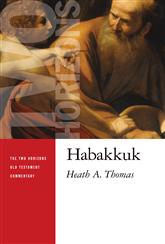Exalting Jesus in Isaiah - A Review
As we recently celebrated the 500th anniversary of the start of the Protestant Reformation, we have also been celebrating the recovery of the authority of Scripture within Christianity. Technology and scholastic influences combined to create a cocktail of circumstances that enabled the spread of Scripture in common languages and an eruption of preaching of the Word of God in the church. To read the history of the early Reformation is to read a love story of Christ’s bride for the Bible.
That fervent affection for Scripture is alive and well in our day, particularly among those who practice expositional preaching. The Christ-Centered Exposition Series of commentaries from Holman Reference is both the product of and a contributor to the renaissance of expositional preaching. The series also encourages the conviction that all of Scripture tells about Christ: He is anticipated in the Old Testament and more clearly revealed in the New Testament. The whole Bible is a story of redemption, with Christ as the central hero.
The latest volume in this series – Exalting Jesus in Isaiah – is by Andrew M. Davis, pastor of First Baptist Church of Durham, NC. Davis is well-known for his love of Scripture, most clearly demonstrated by his faithful practice of memorizing whole books of the Bible. He has even previously memorized the entire book of Isaiah, which is the subject of this volume. Davis has also recently completed the arduous task of preaching through Isaiah in his local church; those sermons help give shape to this volume.
All of the volumes in this series of commentaries are intended to be preaching commentaries. That is, the authors emphasize the sorts of information that are most helpful to the pastor as he is shaping his sermons. For example, instead of a lengthy introduction about the various theories of scribal interjections and textual composition of Isaiah, Davis jumps right into illustrations, background, and textual outlines that are helpful for giving a congregation a sense of the main point of the text.
Davis wrote this book in approximately sixty short, easy to manage chapters. Each chapter is designed to cover a passage of Scripture that is about the right length for a sermon. Within each chapter, Davis highlights a key verse, provides a textual outline, and then offers commentary according to that outline. This makes it an invaluable resource for someone preparing a series of sequential expository sermons or those preaching a stand-alone sermon from the book of Isaiah. The chapters are self-contained, making it useful for a consecutive preaching through the book or occasional sermons on a particular text.
Although this volume is closely connected to Davis’ own preaching of the book of Isaiah, it is not a collection of his sermons. Davis habitually manuscripts his sermons, and the page total would be much greater had he simply compiled those manuscripts into a single volume. Instead, the reader is given the gift of a distillation of Davis’ careful study of Scripture, with insightful examples and illustrations scattered liberally throughout.
The greatest strength of this volume are the intertextual connections that Davis makes as he outlines the contents of Isaiah. Since he has memorized so much Scripture, his mind is alive with allusions and cross-references in and to books through the entire canon. For example, in his commentary on Isaiah 6, Davis explains how Christians can know that Isaiah’s vision of the glory of God in the throne room of heaven is, in fact, a vision of Christ himself. John 12:41 makes this plain. Other commentaries may make the connection, but Davis shows how that revelation fits into the exegetical flow of a sermon on the passage.
Davis also provides a number of helpful illustrations throughout the volume, which are insightful for sermon preparation, and also reflect Davis’ unique personality. Readers are offered references to Luther, Calvin, Bunyan, and even poets like Robert Frost to illuminate points. Davis, a former engineer, even uses the recycling of metal from the World Trade Center into the keel of an amphibious transport ship, the USS New York, to illustrate how redemption can come through destruction to introduce Isaiah 3-4. Or, perhaps more characteristically, Davis cites a report on port activity to make a connection between the vanity of seeking economic domination and God’s judgement, which helps bring Isaiah 23 into focus for the modern reader. These detailed, fact-based illustrations are useful resources for sermon preparation.
This entire series of commentaries is an excellent tool for pastors. The structure of these volumes makes them easy to use as a reference during sermon preparation. The tone of the volumes is formal, but not stuffy, which makes them accessible to pastors with a wide range of academic preparation. The content has been adequately resourced to be reliable, but does not fall into the trap that some academic commentaries do of engaging with every divergent perspective to the detriment of clarity and flow. These volumes are preaching commentaries as they are meant to be: tools to assist the people on the front lines of exposition as they seek to rightly divide the word of truth.
NOTE: This post was previously published at B&H Academic Blog, which has since been archived due to a change in communication strategy.












There’s no reason to doubt that Jesus was nailed to the cross. Ultimately, I trust what Scripture says about Jesus’s crucifixion because I also trust what it says about his resurrection. And that’s what we should be celebrating this week.